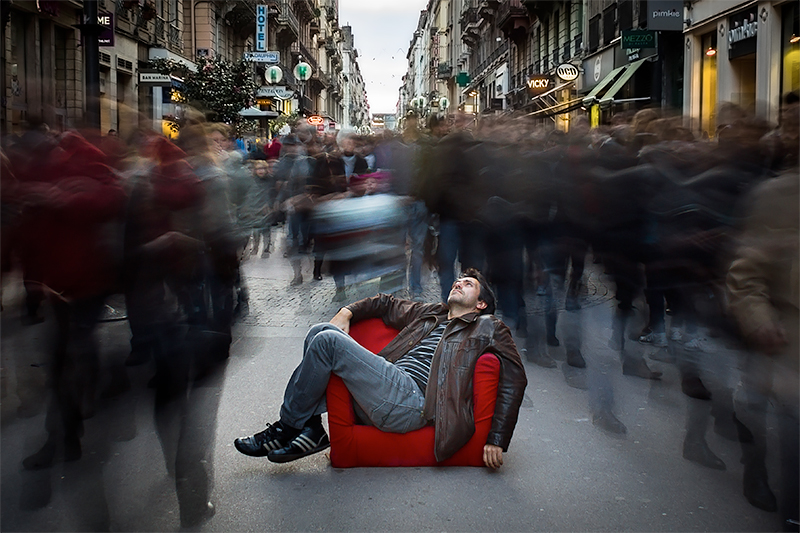Schizothymic baby-boomer, at the age of 12 Francis takes refuge in computer science and excels in this field despite social and academic failure. In 1996, as he becomes an engineer, he meets the need to preserve memories of the Moment and tries photography. Gradually, this utopia fades to give way to the sensitivity he has so long repressed. 20 years later, he is an accomplished self-taught artist through the study of technique and the masters who inspire him such as
Raymond Depardon,
Rafael Minkkinen and
Daido Moriyama.
Key encounters have formed his photographic approach to bring him to social contact and staging. He then abandons computer sciences to exploit his bubbling creativity, full of sensitivity. The human being is then at the center of his work, after the fashion of the "Self" (Freud), which lies between unconscious desires and moral standards. Affected by the death of a friend, he undertakes a strong introspection that will highlight neuroses that he crystallizes through nude photography.
In 2011, he begins the
IN SITU project about mental escape, a phenomenon that concerns him. In 2014, he develops a shooting process to build the
AQUATIC series. In 2017, the images encounter a great success, are published and exhibited at the FEPN in Arles, namely with the festival bill. With his installation in the heart of the Saint Anne chapel, Francis goes beyond photography to offer a contemporary art installation which sublimates female energy.
Artist Statement
"The human element is a fantastic material. I like observing bodies, their movements and expressions, sometimes with the idea of appropriating them. The part that fascinates me the most, because almost inaccessible, is the soul, at the head of the personality with its tastes, emotions and especially its history. Then comes the complex relationship to society, which evolves with environment and time. I approach the person naturally with openness and sensitivity, on the lookout for singularities that may resonate in me. From object, 'the other' becomes a proper individual, whose distinguishable particles and sub-particles I highlight.
The main theme of the work I am presenting is that of the relation to reality: whereas the physical body is submitted to the present, imagination is free to roam without constraint in time and space. The ambiguity of this permanent oscillation between rational and irrational, resignation and escape, motivates me in my research where letting go is the motto. The plurality of my projects illustrates the richness of mental spaces that I have visited. Whether dreamlike or real, I put limits only on the possible interpretation of the codes that I use."